With the 21st overall selection in the 2018 NHL Draft, the San Jose Sharks selected perhaps the most controversial prospect in the class. Ryan Merkley, a right-handed defenseman from the Guelph Storm, fell down many team’s draft boards due to supposed attitude issues, inability to receive coaching, and unwillingness to commit to defense.
Due to these issues, Merkley was traded twice during his Ontario Hockey League career. The second of which landed him on the London Knights, where he flourished and began erasing his rumored attitude problems. In 60 games before COVID-19 halted the 2019-20 season, the blueliner had 15 goals and 76 points on a loaded Knights roster.
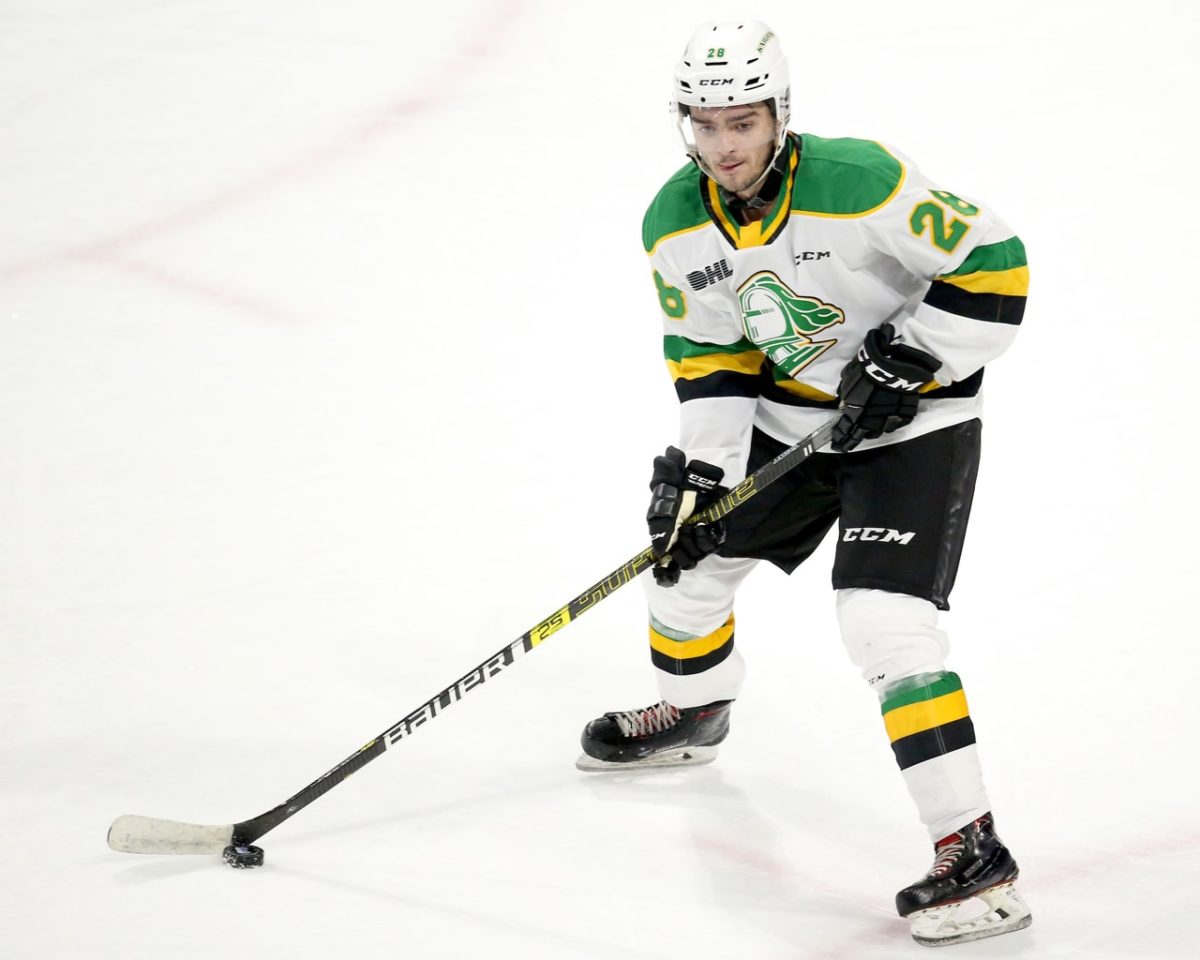
In 2020-21, many were quick to doubt Merkley’s transition to professional hockey. For an offensively gifted player, only tallying a goal and 11 points in 31 American Hockey League (AHL) games left a lot to be desired. His second AHL season, however, saw him recapture his offensive game for the San Jose Barracuda.
In 22 games, now benefitting from time on the team’s top power-play unit, he has a goal and 17 points. And, due to injury and COVID ailing Sharks defenseman, Merkley has slotted into 10 NHL games. However, he has remained in the lineup the last few games despite the overall health of the Sharks defense.
What makes Merkley so special that he’s forced Bob Boughner to keep him in the lineup, even with a healthy core of players? For me, playing Merkley over Simek comes down to identity, higher upside, and development.
Vlasic-Merkley vs. Vlasic-Simek
Merkley’s spot on the right-side of the bottom-pair was first occupied by Radim Simek. The Czech blueliner is adept at playing on his off-hand and is still paid $2.25 million yearly through the 2023-24 season. The bottom pair has been anchored by Marc-Edouard Vlasic for most of this season, who still provides minimal defensive stability in the back half of his career.
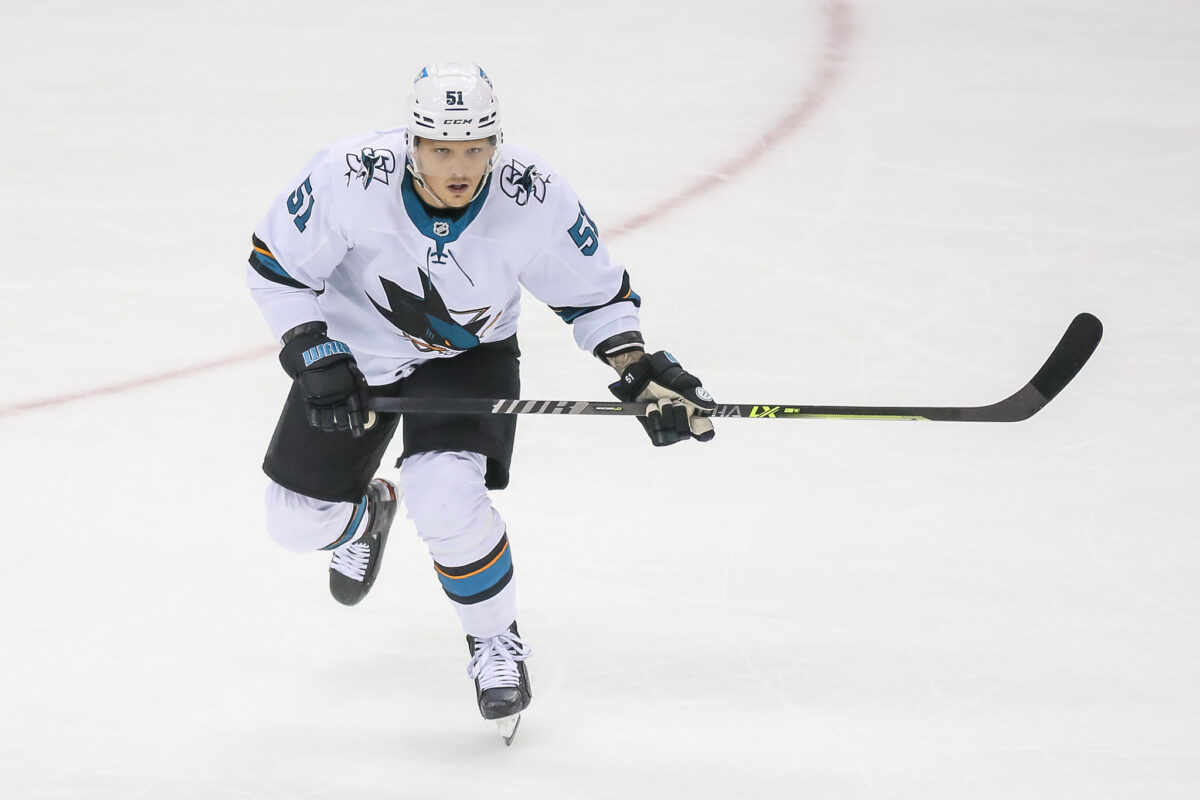
The original bottom pair of Vlasic and Simek played defensively sound hockey. In fact, MoneyPuck’s model has that pairing as one of the best defensive pairings to play over 100 minutes. Together, they only give up 1.7 expected goals against per 60-minutes (xGA/60). In other words, if played for an entire game, the pairing would expect to have 1.7 goals scored against them on average.
And, those numbers are pretty in line with the Sharks’ identity as a defensively minded team. Using Hockey Reference, the Sharks allow an expected 2.12 goals-against per game. Purely from that defensive perspective, there’s a good argument to put Simek back in, considering Vlasic and Merkley expect to give up 3.36 goals per 60-minutes.
However, here’s where I come to my first argument: the Sharks need more offense. The Sharks still give up more goals and expected goals than they manufacture for themselves. On the season, they have been outscored 78-69 and scored 2.09 expected goals per 60-minutes (xGF/60). Luckily, Merkley’s offensive capabilities have transferred to the NHL.
Vlasic and Merkley far outclass the offense of the original third pairing. The current third pairing creates 3.05 xGF/60. For reference, that is narrowly more offense than Erik Karlsson creates with Jacob Middleton, and well over the offensive impact of the Mario Ferraro and Brent Burns top pairing.
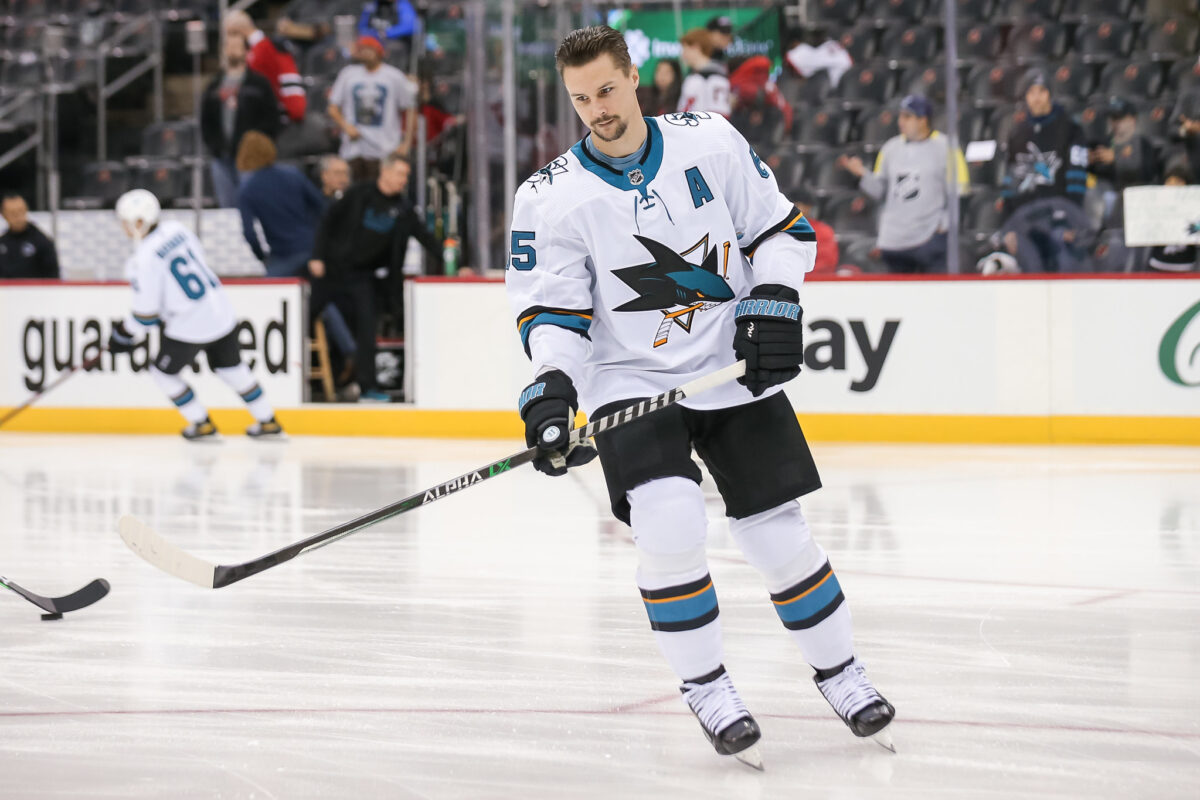
Together, Vlasic and Simek create only 2.06 xGF/60, the only regular Sharks pairing to create under the team’s average. For a Sharks team that has only scored through their last six games, they need to continue pushing for offensive impact while waiting to regain their fully healthy forward core.
The Sharks, I believe, can sacrifice some defense for offense moving forward.
Both Simek and Merkley are Sheltered
It’s not like the team’s head coach uses Merkley in a more sheltered role. In fact, Merkley and Simek start the least number of shifts in the defensive zone. Those two blueliners are the only Sharks defensemen that start under 7% of their shifts in the team’s defensive zone.
They have similar impacts on shot attempts (Corsi For%). The youngster has a positive impact, with 51%, and is the only San Jose defenseman besides Karlsson, to net a positive impact. Simek, is average in that statistic.
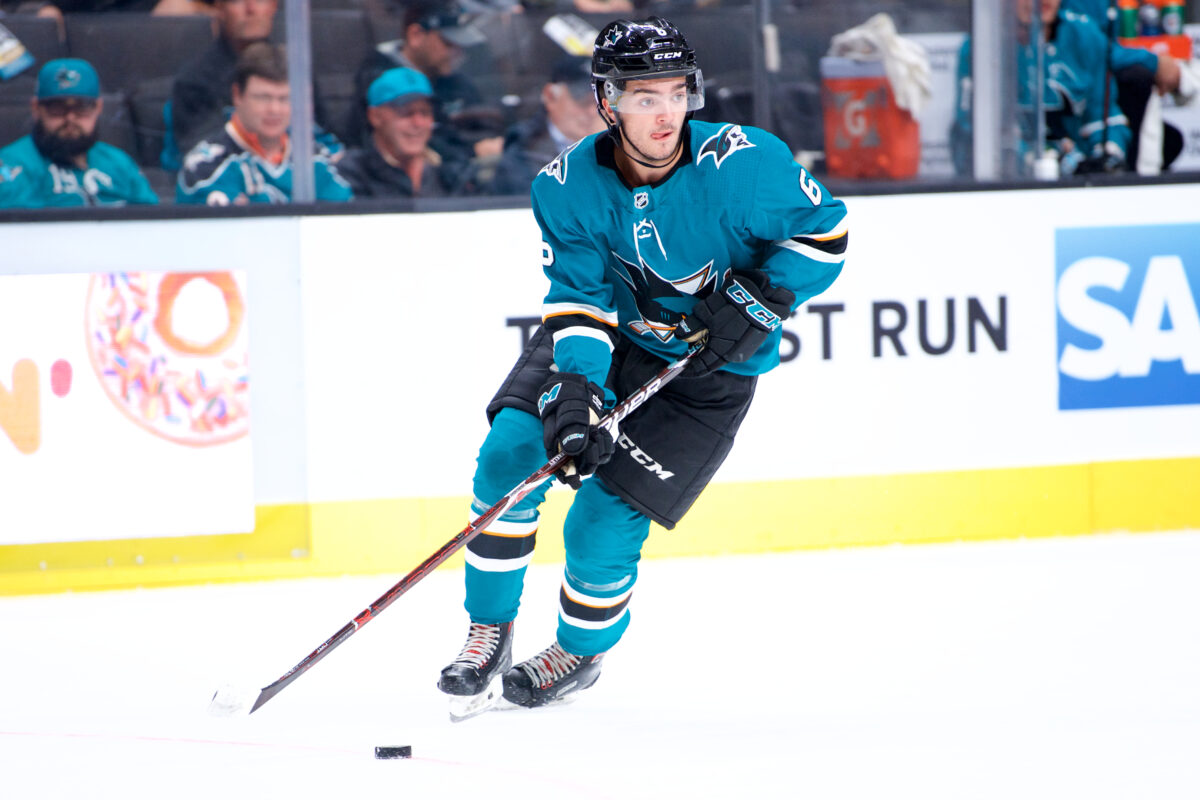
However, Merkley actually creates these attempts. Through his 10 games, Merkley shoots 2.8 times per game at 5-on-5. Compared to Simek, who shoots half that. It’s clear that the rookie creates more offense himself.
And, that’s true from just the eye test. Watching Merkley in his recent stint, I have been impressed with the defenseman’s skating ability. Unlike Simek, Merkley can carry the puck into the offensive zone and create scoring opportunities off the rush. I thought the best example came against the New York Rangers when he skated and stick-handled by multiple players to set up Nick Bonino for a tap-in. Sadly, the pass went through the center’s legs and led to a turnover.
Ripping Off the Band-Aid For Sharks
Those not in support of Ryan Merkley’s spot in the lineup point out the Sharks already have two offense-first defensemen in the lineup. Why should the Sharks play Merkley when Karlsson and Burns already create offense and quarterback the team’s power play?
For one, Burns is no longer used in an offense-first role. Even when Simek was in the lineup, the top pairing of Burns and Ferraro has taken the opponent’s top line. The team’s defense-first bottom pairing never allowed the bearded veteran to play his naturally offensive role.
Related: Sharks’ 2021-22 Midseason Prospects Report
Second, the Sharks’ power play has been horrid. In their last 20 attempts on the man-advantage, the Sharks have scored twice and allowed three goals against. Experimenting with another puck-moving defenseman on the power play cannot hurt at this point.
And, it’s not like Burns or Karlsson are likely to move. Including 2021-22, Burns has four years remaining on his contract and Karlsson has six. Sooner or later, all three right-shot offensive defensemen will have to play together.
Merkley may not have much more development to do in the AHL. By far the Barracuda’s top scorer, Merkley can only grow so much when faced with lesser competition.
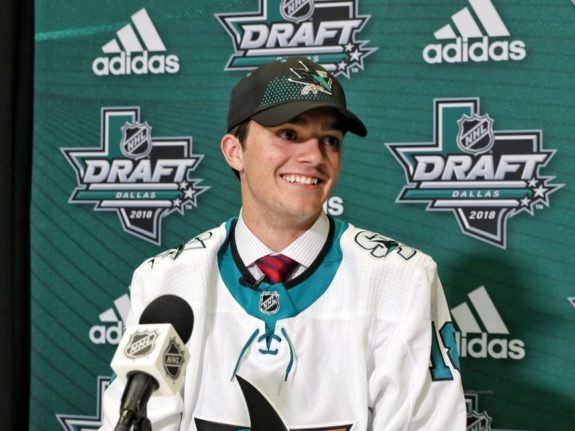
Similar to Karlsson and Burns, Merkley will not play defense-first. Mobility, offensive instincts, and puck skills are why the two veterans are paid incredibly high salaries, and all three were selected in the first round of the NHL Draft.
What do you think of Ryan Merkley’s performance so far this season? Let me know in the comment section below!